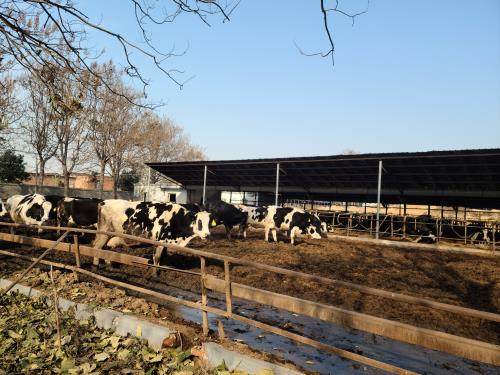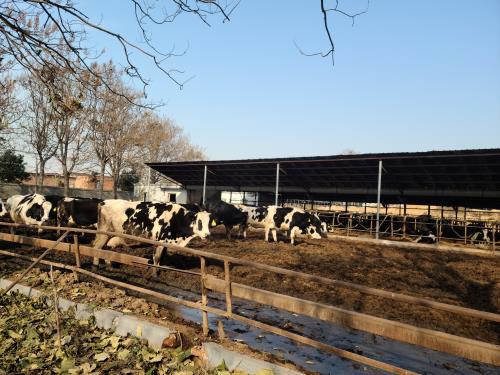The follicles of cows develop in the form of follicle waves. The dominant follicles of one wave maintain their dominance for 4-5 days. It can be observed on the cow ultrasound machine that they lose their dominance and degenerate at 11-12 days of the estrus cycle, which lasts about 5-7 days. At the same time, the second wave occurs, and its dominant follicle is selected and develops to ovulation. However, in the three-wave cycle, the second wave is replaced by the third wave, and the ovulation of the third dominant follicle occurs. It can be observed on the cow ultrasound machine that the dominant follicle maintains morphological dominance (the largest follicle in the two ovaries) for a longer time than maintaining functional dominance (inhibiting the growth of other follicles).
The cow follicle is a liquid structure on the ovary, which appears as a liquid dark area on the cow ultrasound machine sound image, which belongs to low-density echo. The follicle wall is composed of a granulosa cell layer, and the normal follicle wall is relatively thin. Compared with traditional rectal examination, the cow ultrasound machine has obvious advantages. The B-ultrasound machine for cattle can detect follicles with a diameter of less than 5mm on the ovaries. By continuously observing the ovarian activity, it can be clearly determined which stage of the estrus cycle the animal is in, so as to determine the best time for estrus or insemination.
Before the ovulation of the animal's ovulatory follicles, the B-ultrasound machine for cattle can be used to check and monitor in time so as to determine the appropriate time for insemination. During the estrus cycle, the diameter of the dominant follicle of cattle is generally 10-20mm, and ovulation occurs about 12h after estrus; the diameter of the follicles in the estrus stage ranges from 14.2cm-15.9mm. When the follicle develops to 21mm, the cow begins to enter the ovulation stage; insemination is performed 6-24h after ovulation. The dominance of follicles in sheep and goats is not as obvious as that in cattle. The diameter of the largest follicle in the luteal phase of the goat follicle wave is smaller than that of the largest follicle after ovulation, and some even do not reach more than 5.0mm, but it also has a certain function of dominant follicles. Sheep and goats have certain similarities in follicle dominance. If a mature follicle is present in the first test but disappears in the second test, ovulation has occurred; a corpus luteum then develops at the same point. To detect ovulation, the test can be performed every 2 or 4 hours.








